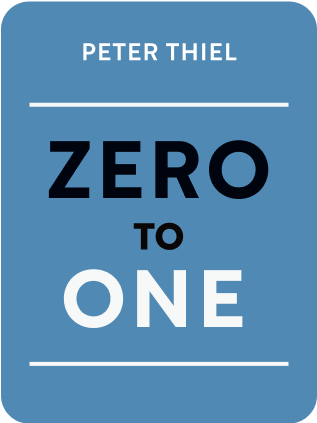

This article is an excerpt from the Shortform summary of "Zero To One" by Peter Thiel. Shortform has the world's best summaries of books you should be reading.
Like this article? Sign up for a free trial here .
What is the role of marketing and advertising in startups? Do you need a strong strategy to succeed?
A startup needs marketing and advertising to succeed. Before you launch your company, you’ll need a strong marketing and advertising plan in place. Read to find out why.
Marketing and Advertising for Startups
Marketing and advertising are effective for selling low-priced products for mass consumption—such as package goods sold in supermarkets—that don’t lend themselves to viral sales or traditional sales by reps.
For example, to sell laundry detergent in large retail outlets, Procter and Gamble creates television commercials and newspaper coupons, and it designs its boxes to be eye-catching in stores.
Advertising can be effective for startups as well—but only when your customer lifetime value acquisition costs make traditional or complex sales methods unfeasible (since the human labor cost of sales exceeds the value of gaining a customer). The company selling $100 eyeglasses, Warby Parker, was able to get its affordable glasses in front of millions through quirky TV ads.
On a cautionary note, startups shouldn’t be tempted by the ego boost of a high-profile ad campaign—it’s generally a waste of money to vie with larger companies in an unending battle for attention via TV stunts.
Viral Marketing and Advertising
Marketing and advertising through viral marketing is the cheapest and fastest way to sell a product—by using it, people encourage additional users to participate. Facebook and PayPal both grew quickly through viral marketing. Every time someone shared with a friend or made a payment they pulled more people into the network.
Viral marketing or distribution can trigger exponential growth. The effect should be seamless and fast. YouTube videos or internet memes can be seen by millions in a very short time: In just seconds, people see a cute post, feel a glow, and share it.
PayPal started with only 24 users (employees). But the company achieved extraordinary growth through a form of viral marketing by paying people to sign up and refer their friends. In a few months, PayPal had hundreds of thousands of users. Because they charged customers a transaction fee, revenue exceeded their customer acquisition cost.
The company that’s first to dominate a key market slice with viral capability will ultimately dominate the entire market (be the last mover that no one else can match), if it expands judiciously. PayPal first dominated a key segment—”power sellers.” Once the company had corralled these intense users and began expanding, no imitators could catch up.
Selling Yourself
Besides selling your product, you need to sell recruits, employees, and investors on the value of your company.
Some entrepreneurs fall for the human relations “lie” that their company is so good people will be clamoring to work for it (this is like the “great products sell themselves” distribution lie).
The funding version of this lie is that investors will be knocking down your doors to invest. That’s not true—convincing investors should be a part of your early marketing and advertising plans.
However, great attention doesn’t come without a public relations strategy for selling your company to the media. While entrepreneurs may be wary of the media, they shouldn’t try to ignore it. Media exposure can help you attract customers as well as employees and investors. Any good job candidate will research your company—what comes up in a Google search should be part of your overall public relations plan.
Marketing and Advertising Exercise: Your Distribution Plan
Some entrepreneurs develop a great product but fail to plan for its distribution, or the process for selling the product (advertising, sales, marketing, and distribution). But customers aren’t going to buy it automatically. Distribution should be part of your product design.
Think of a product you currently sell or a potential product. What are your current or planned methods for marketing/selling it?
How did you decide your sales methods? How do they target your most valuable customers?
How do you measure your sales effectiveness? How could you make your methods more effective?
Marketing and advertising should be a focal point of your startup strategy. Make sure you spend time on your marketing and advertising strategy so you can launch with confidence.

———End of Preview———
Like what you just read? Read the rest of the world's best summary of Peter Thiel's "Zero To One" at Shortform .
Here's what you'll find in our full Zero To One summary :
- Why some companies genuinely move the world forward when most don't
- How to build a company that becomes a monopoly (and why monopolies aren't bad)
- Silicon Valley secrets to selling products and building rockstar teams






